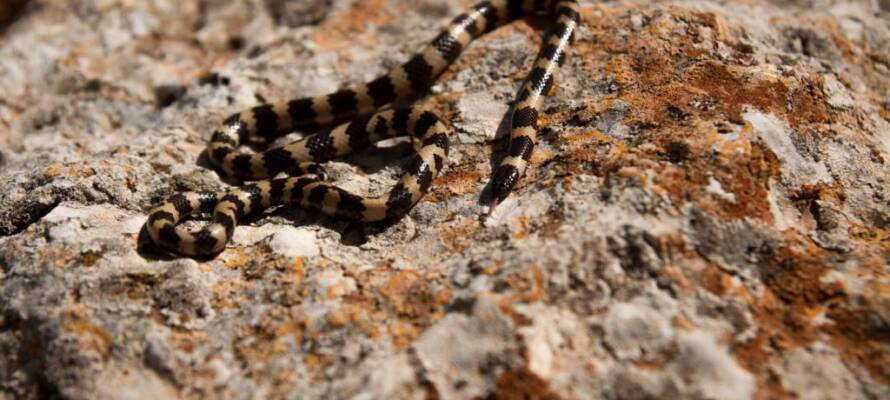This new family, he said, includes only three species, one native to Israel and neighboring countries, and the other two in Kenya and Tanzania.
By Pesach Benson, TPS
A Tel Aviv University researcher working with an international team of counterparts discovered a new family of snakes.
“Even though these snakes have been known for decades, they were mistakenly included in other families for many years. Since most animals have already been classified into well-defined families, such a discovery of a new family is quite a rare occurrence in modern science,” said Professor Shai Meiri of Tel Aviv University, who participated in the research.
The small snakes, called micrelapid, usually have black and yellow rings. According to Meiri, they diverged from the rest of the evolutionary tree of snakes about 50 million years ago.
“Today, we tend to assume that most large groups of animals, such as families, are already known to science, but sometimes we still encounter surprises, and this is what happened with Micrelapid snakes,” he explained.
“For years they were considered members of the largest snake family, the Colubridae, but multiple DNA tests conducted over the last decade contradicted this classification. Since then, snake researchers around the world have tried to discover which family these snakes do belong to – to no avail. In this study we joined the scientific effort.”
This new family, he said, includes only three species, one native to Israel and neighboring countries, and the other two in Kenya and Tanzania.
The study’s findings suggest the snakes likely originated in Africa. At some point in history, some made their way north through the Great Rift Valley.
The researchers used high-resolution magnetic imaging to examine the snakes, focusing specifically on the skull. In addition, they applied methods of deep genomic sequencing – examining DNA coding.
The research team’s findings were published in the March edition of the US-based peer-reviewed journal, Molecular Phylogenetics and Evolution.






















